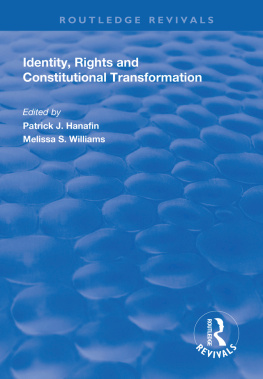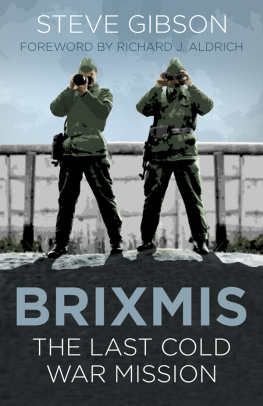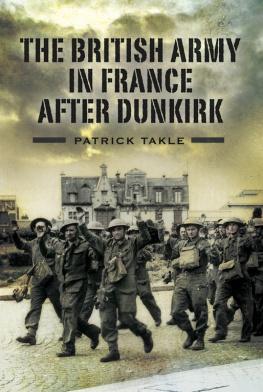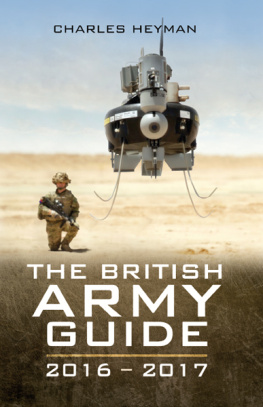MISSION IMPROBABLE
Patrick Bury is a lecturer in Defence and Strategic Studies at the University of Bath; his research focuses on military and counter-terrorism organisational transformation and cohesion. Prior to entering academia, Patrick served in the British Army as an air assault infantry combat officer, fighting in one of the most dangerous areas of Afghanistan: Sangin. A memoir of his platoons tour, Callsign Hades was published in 2010 and has been described as the first great book of the Afghan war. After leaving the Army, Patrick worked as an analyst for NATO and then a private security firm. He has 15 years experience of working in the security sector as practitioner, analyst and academic.
To the men and women of the Army Reserve
Copyright 2019 Patrick Bury
First published in 2019 by
Howgate Publishing Limited
Station House
50 North Street
Havant
Hampshire
PO9 1QU
Email:
Web: www.howgatepublishing.com
All rights reserved.
No part of this publication may be reproduced, stored in a retrieval system, or transmitted in any form or by any means including photocopying, electronic, mechanical, recording or otherwise, without the prior permission of the rights holders, application for which must be made to the publisher.
British Library Cataloguing-in-Publication Data
A catalogue record for this book is available from the British Library
ISBN 978-1-912440-04-7 (pbk)
ISBN 978-1-912440-05-4 (ebk - PDF)
ISBN 978-1-912440-12-2 (ebk - ePUB)
Patrick Bury has asserted his right under the Copyright, Designs and Patents Act, 1988, to be identified as the author of this work.
Contents
This book would not have been possible without the assistance and guidance of numerous academics, military personnel and units that gave generously of their time. I am profoundly thankful to Professor Tony King for his close guidance, insightful analysis, and expertise in the development and refinement of the PhD thesis upon which this book is based. Professors Tim Edmunds, Vince Connelly, Caroline Kennedy-Pipe and David Galbreath, and Dr Sergio Catignani gave excellent and detailed feedback on how to improve the text for which I am also very grateful. Thanks also to Dr Alex Neads, Dr Patrick Finnegan, and Dr James I. Rogers for comments on chapters and insights into reserve service. Kirstin Howgate at Howgate Publishing believed in the project and assisted with the editing and production throughout. Similarly, the project would not have been possible without an Economic Social and Research Council studentship kindly awarded to me by the University of Exeter. I would also like to thank the postgraduate team at Exeter for their kind support during the PhD process. I am also indebted to the British Army for allowing access to their soldiers and for funding some of the research. In terms of the participants, I am very grateful to the numerous generals, ministers, and senior officers who gave generously of their time. Most of all, I would like to express my sincere gratitude to the men and women of the Army Reserve, in particular those in RLC and REME units, who participated in the study. This book could not have been written without your experiences and candid insights, so thank you for taking the time to share them.
| AGAI | Army General Administrative Instruction |
| AR | Army Reserve |
| BEF | British Expeditionary Force |
| CDS | Chief of the Defence Staff |
| CGS | Chief of the General Staff |
| COB | Combat Operating Base |
| Coy | Company |
| DLTP | Defence Logistics Transformation Programme |
| DoD | U.S. Department of Defense |
| EST | External Scrutiny Team |
| Fd Coy | Field Company |
| FFMA | Forward Force Maintenance Area |
| FMA | Forward Maintenance Area |
| FOB | Forward Operating Base |
| FOC | Full Operational Capability |
| FR20 | Reserves in the Future Force 2020 Policy |
| IED | Improvised Explosive Device |
| IOC | Initial Operating Capability |
| JIT | Just-in-Time |
| LAD | Light Aid Detachment |
| LSD | Logistics Support Detachment |
| MATT | Military Annual Training Test |
| MJDI | Management of Joint Deployed Inventory |
| MoD | Ministry of Defence |
| MPA | Major Projects Authority |
| MTDs | Man Training Days |
| NAO | National Audit Office |
| NSPA | NATO Support and Procurement Agency |
| NSS | National Security Strategy |
| PSI | Permanent Staff Instructors |
| REME | Corps of the Royal Electrical and Mechanical Engineers |
| ResCAS | Reserve Continuous Attitudes Survey |
| RLC | Royal Logistics Corps |
| RMA | Revolution in Military Affairs |
| RML | Revolution in Military Logistics |
| SCM | Supply Chain Management |
| SCOR | Supply Chain Operations Reference model |
| SDSR | Strategic Defence and Security Review |
| Sqn | Squadron |
| TA | Territorial Army |
| TAV- | Total Asset Visibility Minus |
| TSF | Total Support Force |
| TRANSCOM | Transport Command |
On 3 July 2013 in the House of Commons, the then Defence Secretary Philip Hammond outlined perhaps the most radical transformation of the Territorial Army (TA) attempted since its inception 105 years before. Summarising the new Reserves in the Future Force 2020: Valuable and Valued (FR20) policy, Hammond announced that in order to arrest the decline of the reserves and better integrate them with the regular armed forces, the government was investing 1.8 billion over the next ten years in reserve equipment, training and remuneration. Such a transformation envisaged the centralisation of reserve units and their incorporation into the armys new tiered readiness structure, Army2020. This new vision articulated a step-change in the prominence of the reserve army in British defence policy and a major transformation of a force that had traditionally been a part-time militia of citizen-soldiers. The challenge was great, but with Hammond stressing the investments to be made to the reserves in numerous areas, FR20 received wide cross-party support in the House that day. The attempt to transform Britains reserve army from a strategic to an operational reserve had begun, and FR20 would quickly become a central tenet of British defence policy in the Cameron era.
The support Hammond received unveiling FR20 in the Commons in July 2013 stood in stark contrast to its genesis, and indeed, its later evolution. Before the government had even unveiled the transformation, it had had to reconcile intra-party political divisions, overcome resistance from army high command, then set up a separate planning team due to lingering distrust, while all the time remaining sensitive to public opinion in the wake of the recent cuts to the defence budget and the size of the army in particular. Indeed, in a nod to the impact these cuts had had on the army, Hammond remarked: The Army has had substantially to redesign its reserve component to ensure that regular and reserve capabilities seamlessly complement each other in an integrated structure designed for [its] future role. Hammond thus highlighted that the transformation of the reserves was closely related to, and was being undertaken simultaneously with, what was arguably the most significant organisational transformation of the army since the abolition of conscription in 1960.












